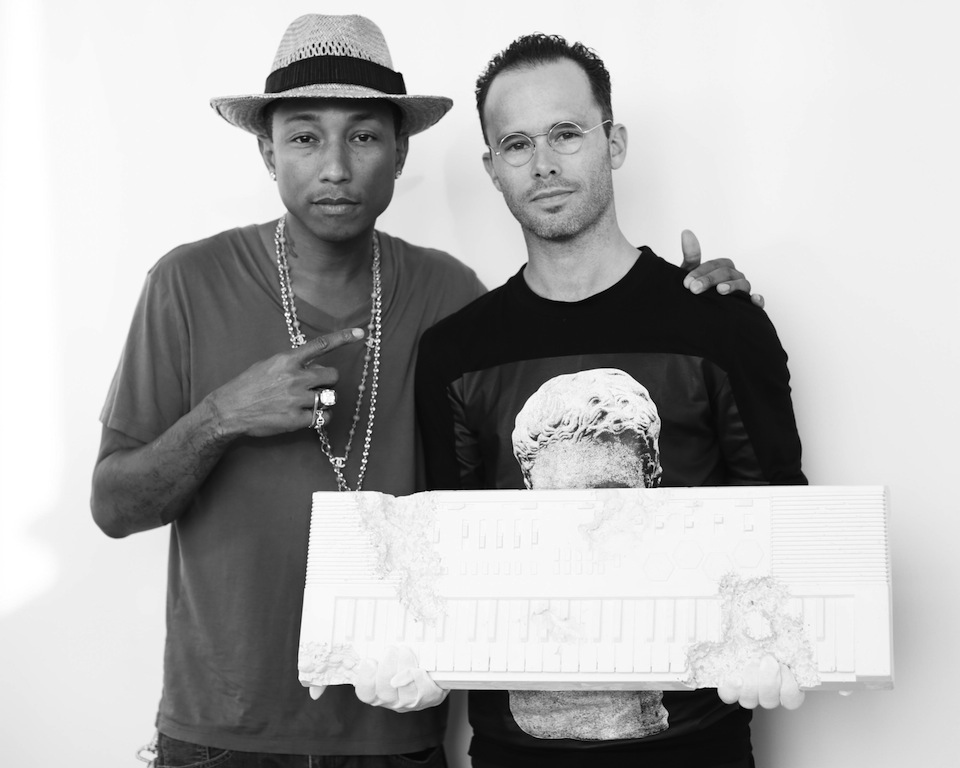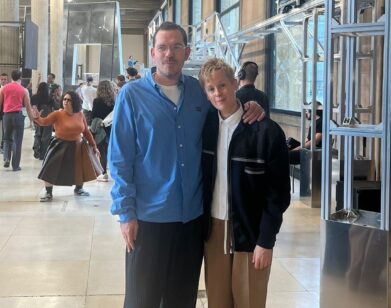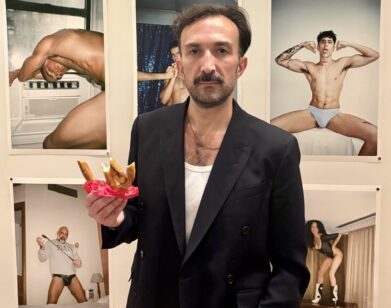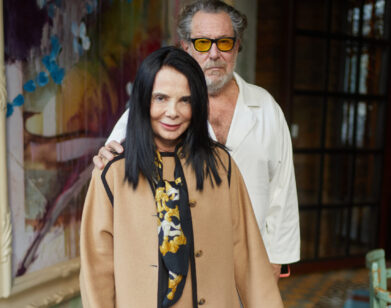Pharrell’s First Piano

ABOVE: PHARRELL WILLIAMS AND DANIEL ARSHAM. PHOTO COURTESY OF BILLY FARRELL AGENCY.
Pharrell Williams’ name often appears next to someone else’s. “Robin Thicke feat. Pharrell,” “Daft Punk feat. Pharrell,” “Azealia Banks feat Pharrell”: collaborating is his full-time (and as of this summer, overtime) job. Yesterday afternoon, in the penthouse of The Standard, East Village, we found him sitting next to his latest collaborator, artist Daniel Arsham.
“Amazing. I mean, look at that,” Williams started, gesturing at the piano-shaped mold in the corner. “I want that in my living room.”
We’d come to preview the producer’s newest high-profile partnership: the one-night-only art exhibition that Williams and Arsham were hosting at the hotel. As the culmination of conversations they’d begun at Arsham’s studio a year ago, the artist had made four castings of an instrument from the very beginning Williams’s career: the keyboard. “I used to use it in the RadioShack whenever my parents would go there for whatever—my dad might need screwdrivers or wiring for systems and stuff,” Williams remembered. “But I would go straight to the keyboard aisle and go press on all the drum pads.”
The idea was to underscore, even exaggerate, how antiquated this hardware had become in such short time. “Much of my work recently has been about identifying these objects that we all have a familiarity with, but that aren’t used anymore,” Arsham explained. His goal? “To take something from the past, and give it this texture and this materiality that projects it into the future.” He did this by rendering casts of the keyboard in mixtures of crystal, shattered glass, steel, and volcano ash. “It’s recalling these notions of age and geology,” he offered. He calls them future relics.
“I know for a fact that it’s brought him back to this moment in his career,” Arsham said of Williams. “He’s having a big moment right now personally, so it was for him to go back and think about the genesis of when he started making music in the late ’80s.”
But the sculptures held sentimental value outside of Williams’s personal experience. Technological relics, mass-produced and virtually identical, invited emotional projection from other viewers when they arrived for the vernissage that evening. So long as they wore protective gloves, guests were allowed to touch the artifacts. “I noticed a number of other people commenting like, ‘Yeah, this is the first thing that I ever made music with, too,'” said Arsham. “So I think that for any of us, looking at a piece of technology that we know, and seeing it decayed in this way, instantly creates all of these thoughts about time.”
The works definitely resonated with Williams. “When you look at that, you’re like: a human was there. A human had that idea. Before it even got cast into what it is now. It’s an instrument, it tells a story.”
“Well, you don’t actually have the original keyboard,” Arsham inserted.
Williams was fixed. “No, but I’m gonna go get it now. I’m definitely gonna go get it now.”






